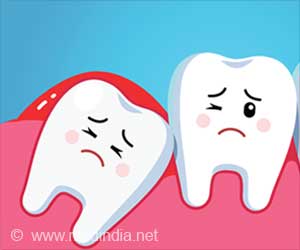Researchers have developed new bioactive cement which could be used as a scaffold during reconstructive surgery on the face.
Researchers from the American Dental Association Foundation (ADAF) and the National Institute of Standards and Technology (NIST), have developed a new technology that would help improve in reconstruction of face.
This new technology helps in making scaffolds for bone tissue. The scaffold is laced with the patient's own cells. The scaffold is formed with a cement paste made of minerals also found in natural bone. The paste is mixed with beads of a natural polymer found in seaweed filled with bone cells. The paste can be then shaped or injected into a bone cavity and then allowed to harden with the encapsulated cells spread throughout the structure. These natural polymer beads gradually dissolve when exposed to the body's fluids, forming a scaffold that is filled by the bone cells. Adding chitosan, a biopolymer extracted from crustacean shells, strengthens the cement, which is made of calcium phosphate material. The implant is further reinforced to about the same strength as spongy natural bone by covering it with several layers of a biodegradable fibre mesh that is in use in clinical practice.Mr.Hockin Xu, of the ADAF and principal investigator for the project, states that the bone cells are very smart, as they can tell the difference between materials that are bioactive compared to bioinert polymers. He explains that the new material is designed to be similar to mineral in bone so that cells readily attach to the scaffold. He explained that though the researchers used bone cells from mouse in their experiments, in practice the surgeons would use cells cultured from patient samples. The natural polymer beads help by not only creating pores in the hardened cement, they also protect the cells during the 30 minutes required for the cement to harden. They are planning to develop methods in future for improving the material's mechanical properties by using smaller encapsulating beads that biodegrade at a predictable rate.
NIST and the American Dental Association Foundation have conducted cooperative research on dental and medical materials since 1928. ADAF researchers focus on development of new dental materials, while NIST specializes in the development of improved technologies and methods for measuring materials properties.




